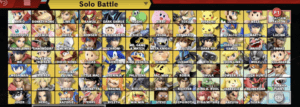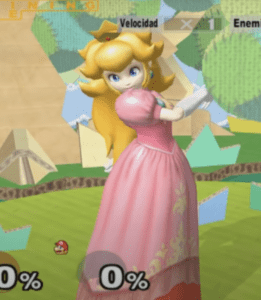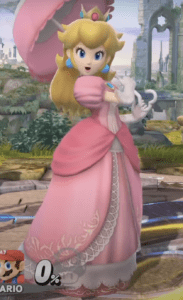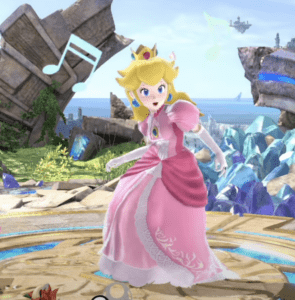During this week’s critical play, I decided to play Super Smash Bros. During the reading, Chess notes that “a game is a kind of text, and like any text, it has the narrative possibilities to affect, alienate, or subsume its audience into the story.” Along with this, in Chess’ feminist theory, there is an emphasis on story: “just as with any medium, a good feminist game needs to tell a good feminist story.” Many of the other games feature female narrative-heavy structures that I imagine directly support this theory. However, I was interested to explore a game with a little overt female-lead story to see if/how it falls short of presenting a feminist story.

The first element game mechanic that I became intrigued by was the selection process for characters and the limited availability of female characters. A quick glance reveals that the overwhelming majority of available characters are male. However, along with this, I found the order/presentation of characters interesting through the lens of feminist theory. Not only is the entire first row, which doubles as a “first read” for new players, all male, but when female characters are introduced they are introduced in pairs. For example, Peach and Daisy are grouped together. Sheik and Zelda are linked together. The Wii Fit Trainer and Rosaline are paired together. Along with this, in male-female duos, like Ice Climbers, the male half dominates a majority of their allocated block. These are very small design decisions but come with connotations.
As the reading mentioned, “video games have a history that might tend toward misogyny, but have the overwhelming potential in their format to revise, rethink, and reprogram what it means to be a game.”
In many ways, I believe this presentation of characters may carry some of that weight. However, after playing multiple rounds as Peach, I became extremely interested in examining her character’s “evolution” over the 20+ years Smash Bros has been around. Undoubtedly, in the campaign, her character is far from the strong female protagonist presented in other games. However, I decided to explore how her gameplay strategy has evolved over the years, a kind of feminist narrative over time. Specifically, what narrative are we being told about Peach over time. How much of their presentation is flat/static and where do we see growth/empowerment?

For this, I decided to focus on Princess Peach because she is arguably the most notable and defining female character in the game. Along with this, she is externally attributed with many female characteristics and I was interested to see how these evolved over time. To do this, I found clips of Princess Peach’s style, fighting combos, and aesthetics from the Gameboy version, Wii version, and now the WiiU version. This spans roughly 15 years of design evolution.


Physically, she is identical in all three versions, typical of her iconic look. However, in the gamecube version, her “move” selection included: her simplest attack is a slap, then she can pull out a pot, kick with her heel, throw a toad, or hit with her umbrella.
In the Wii version, her attack style is identical, but rather than attack with her umbrella, she can hit with a golf club. Then, for the WiiU/3DS version, the golf club is swapped out for a tennis racket. I believe the evolution of pot → golf club → tennis racket presents and interesting narrative of the game designer’s feminism. However, I still believe that this falls short. An overwhelming majority of Peach’s attacks involve leveraging an object to conduct damage, while for other players they do not rely on other objects to use. Along with this, none of these objects that the game designers provide Peach with are unique to her. A tennis racket/golf club are not items closely associated with Peach (like a Yoshi egg, for example).
My recommendation for this would be to explore how to embrace Peach’s physicality for her combat, rather than introducing objects she can use. Given that Super Smash Bros is not a narrative-heavy game, I believe their feminism is not as explicitly exercised through narrative. Instead, given the static nature of many of their characters, feminism comes through small design mechanics and choices. To this end, I would consider redesigning the ordering of characters. For example, why have Peach and Daisy clumped together, but Mario and Luigi aren’t? In many ways, this allows Mario and Luigi to exist as their own (as two individual characters), but Peach and Daisy are somehow linked? Further, I would encourage the designers to redesign Peach’s fighting mechanics to avoid relying on random objects to cause damage. Instead, think about Peach as a character. For example, is there anything that could be done with her crown? Her large dress? Having her slap people with a pot feels dated and lazy.
Discussion Post:
How would you improve the design of Peach? How do we “evolve” characters that are so old/classic, but may be stereotyped and evolve them over time without losing the essence of their character?



